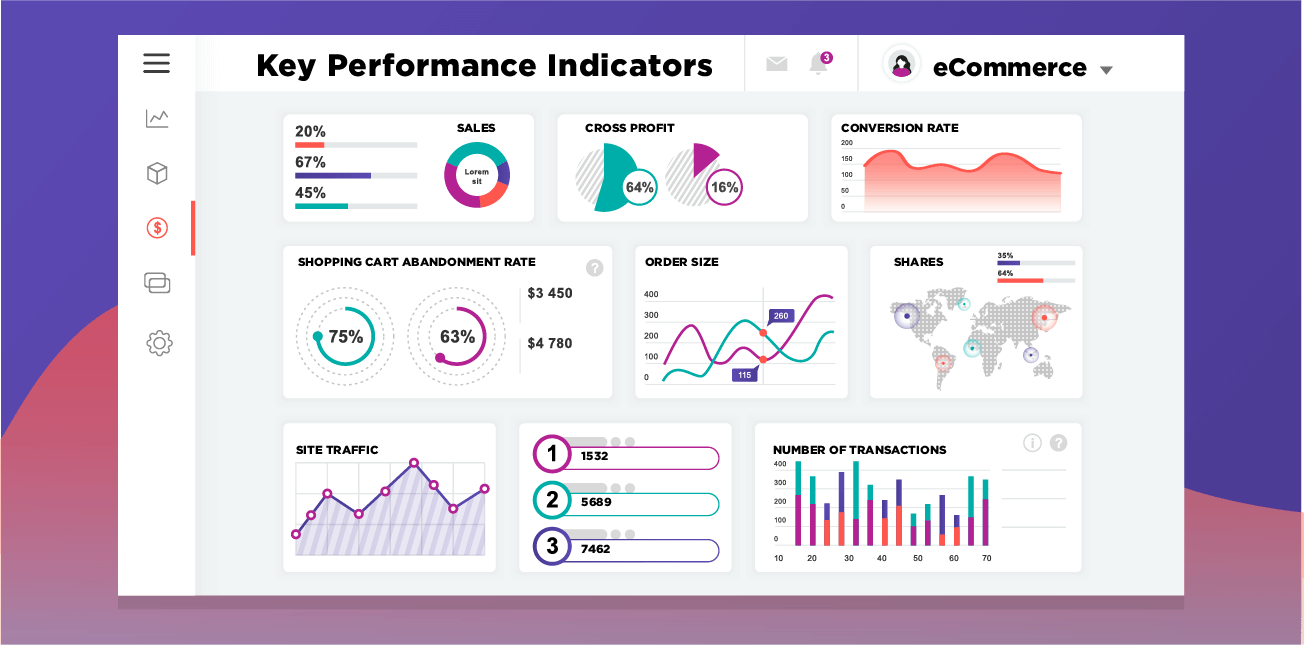Key performance indicators, or KPIs, are important for every eCommerce business. That’s because tracking KPIs, or a specific set of indicators, enables companies to measure the progress towards business goals and make effective strategic planning. In this post, we have curated the eCommerce KPIs list that helps you keep a pulse on the health of your business and monitor its’ monthly and daily growth.
Table of Contents
What are KPIs for eCommerce?
The key performance indicators for eCommerce aims to help managers track progress against sales, marketing, and customer service goals. Each business must define which KPIs to track based on their brand’s unique goals.
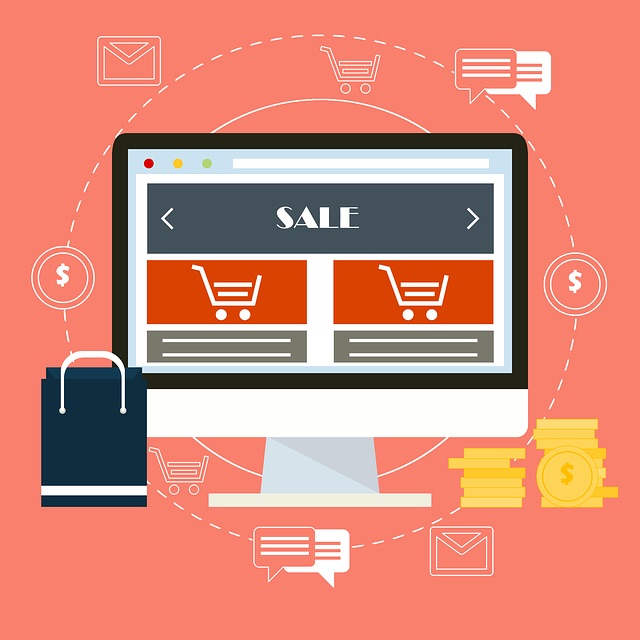
Examples of types of key performance indicators for eCommerce
Although there are many types of KPIs that you can measure using an analytics tracking tool, they fall under 5 main categories:
- Sales: These key performance indicators measure your business’ health in regards to conversions and revenue. Managers can use sales KPIs results to inform business decisions.
- Marketing: Monitoring the success or need for change in relation to your marketing and advertising goals helps you better understand which products are selling, who’s buying them, and what channels they are using to purchase.These KPIs impact future marketing and product development strategies.
- Customer service: Use these KPIs to measure the overall effectiveness of your customer service to ensure satisfied and happy customers.
- Operations: Operational KPIs include measuring the efficiencies and inefficiencies of your supply chain and production processes. These KPIs give you a clear understanding of the overall effectiveness of your productivity and expenses.
- Project management: Tracking how efficiently your teams are performing in completing projects lets you access if changes to workflow or problem-solving processes need to be updated or if they are working to your expectations.
What makes solid KPIs for eCommerce?
Online businesses typically measure a minimum of 5-7 eCommerce key performance indicators. Ecommerce managers need to have a plan in place to capture the data in a fast and consistent method. For this reason, applying the following specific rules, or components, when defining your eCommerce key performance indicators will allow you to create solid KPIs you can rely on:
- A Measure: Make sure every KPI has a measure, the more expressive, the better.
- A Target: Create a target for each KPI that matches your measure and the time period of your goal. Commonly this will be a quantitative goal.
- A Data Source: Setting a clearly defined data source ensures consistency and zero variables in how each KPI is measured.
- Reporting Frequency: Some KPIs you might track weekly, while others, monthly. Be consistent regardless and at a minimum track each KPI monthly.

What metrics are most important for measuring an eCommerce business?
Of course, all businesses, online and offline, must track ROI, cash, receivables, and payables and key accounting metrics.
However, there are some KPIs that apply to every online business. Here are the most important metrics for measuring an eCommerce business:
- Sales conversion rate: How many visitors are converting into customers.
- Email opt-ins: How many subscribers are opting into your newsletters and emails.
- Customer lifetime value: An estimated prediction of the monetary net profit attributed to the entirety (or lifetime) of a future relationship with a customer.
- Customer acquisition cost: This total cost of acquiring a customer, including marketing and sales effort to onboard the customer.
- Revenue by traffic source: How much ROI you gain from leads coming from specific sites/sources.
- Average order value: This is the average amount of money spent considering overall orders.
- Shopping cart abandonment rate: The percentage of which shoppers leave your site without completing a purchase of items placed in their shopping cart.
- Net Promoter Score: Used to gauge the loyalty between customer and brand. Measures the likelihood of the customer to recommend (otherwise promote) your brand.

Furthermore, other factors may influence which KPIs are important to your eCommerce business. These range from your brand’s industry, leadership, and company culture.
An example of this is eCommerce merchants selling their products mainly via social media channels or influencer referrals. In this case, sellers would want to track specific social media KPIs that wouldn’t necessarily factor into typical eCommerce websites. Some examples are KPIs such as Likes, Social followers, Shares, Comments and Profile visits.
What are the best eCommerce KPIs to track monthly?
By tracking KPIs monthly, eCommerce marketing managers can better understand their brand’s qualitative, quantitative, predictive behavior, or past trends.
Here are some of the best eCommerce KPIs to track monthly for your eCommerce business.

Cost Acquisition Cost (CAC)
What is Cost Acquisition Cost?
This should include the full cost of acquiring a customer. such as the spend on marketing, sales efforts to onboard a client. The cost is calculated before sales taxes but following adjustments for discounts, incentives or additional costs (such as closing costs).
How do you calculate Cost Acquisition Cost?
In order to calculate the CAC, you need to sum all your marketing and sales spends. So if you have multiple paid sources/channels you need to collect the data from each one to calculate the sum together.
- Facebook: Go to Facebook Ad Manager→ Set Time Frame to “This Month” (upper right corner)
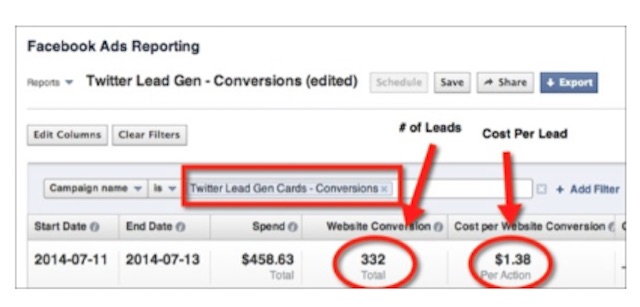
- Google Ads budget → Click the tools icon in the upper right corner. You’ll find Billing & payments under the “Setup” header. Click Account budgets in the navigation menu on the left, then the +Budget button.

Then sum the Facebook Ads budget+Google Ads budget+any Price Comparison sites+any affiliates/partnerships/CPC and dilute with the total number of new customers.
Lifetime Value – LTV
What is Lifetime Value?
Lifetime value is an estimated prediction of the monetary net profit attributed to the entirety (or lifetime) of a future relationship with a customer.
What is a good Lifetime Value?
It depends on the industry. For example, a customer is considered as profitable to your company if the cost of customer acquisition for the particular customer is $50 and their lifetime value is $60.
How do you calculate Lifetime Value?
To calculate customer lifetime value, first calculate the average purchase value. Then take that number and multiply it by the average purchase frequency rate to determine customer value. Finally, you need the average customer lifespan which you multiply by customer value to determine customer lifetime value.
Tip: Customer satisfaction and customer retention are ways an eCommerce company can improve overall lifetime value.
Other Examples of monthly Marketing KPIs for eCommerce
- ROI on Marketing Spend: Measures the percentage of profit gain after marketing expenses.
- Net promoter score: Measures the loyalty of your customers to your brand.
- % returning customers: How many of your customers are returning to your site.
- Month on month sales growth (MOM): Measures your brand’s monthly sales growth.
- Traffic source: Use this KPI to find out what sources your traffic to your site is coming from. Is it from organic? Paid ads, or social media?
- Mobile site traffic: Understand how many users are visiting your site from mobile.
- Email open rate: You need to know how many subscribers are opening up your emails. This way, if you have a low email open rate, you can make changes to your email marketing strategy such as trying out new subject lines, new email templates, etc.
- Unsubscribes: This KPI shows you the total number and the rate of unsubscribers from your email list. Is it high? Low? Is it something you need to investigate?
- Average CTR: The average click-through rate tells you the percentage of users who click through to a page via a link.
Examples of monthly Operational KPIs for eCommerce
- Average Delivery Time: This KPI gives you the info you need to make any logistical adjustments to ensure customer satisfaction.
- Time to Market: Measure how long does it take your products to get to market. Are you losing sales opportunities?
- Employee Churn Rate: This KPI shows your company’s overall turnover for existing employees who leave as well as new ones hired.
Examples of monthly Sales KPIs for eCommerce
- Number of Engaged Qualified Leads in Sales Funnel: This KPI lets you gauge potential growth opportunities.
- Hours of Resources Spent on Sales Follow Up: Is your sales team spending too little or too much time following up on leads? This KPI will show you how many man-hours each lead has dedicated to following up on it.
- Average Time for Conversion: Use this KPI to see how long it takes the above leads to convert to sales.
- Net Sales – Dollar or Percentage Growth: Use this KPI to track growth on a monthly average to gauge if your marketing strategies are working or if you need to adapt some changes to reach your goals.
What are the best eCommerce KPIs to track daily in 2021?
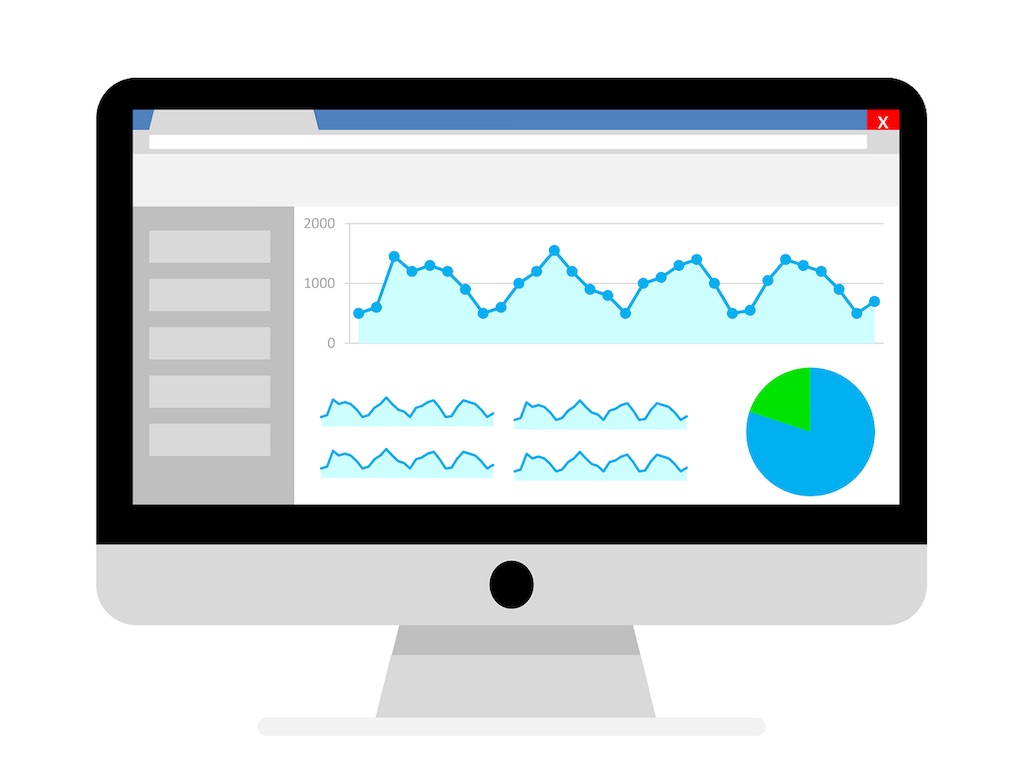
Now let’s look at the best eCommerce KPIs to track daily and how you can calculate your business’ specific needs.
Ecommerce conversion rates (eCR)
What is eCommerce conversion rate?
Understanding what percentage of visitors is purchasing from your eCommerce store (over a given period of time) is important in gaging your overall success.
What is a good eCommerce conversion rate?
The average eCommerce conversion for desktop is at 3.83% The average ecommerce conversion for mobile is at 2.03% The average ecommerce conversion for tablet is at 3.84%.
How do you calculate eCommerce conversion rate?
You can calculate how many of your visitors convert into eCommerce sales with this simple formula:

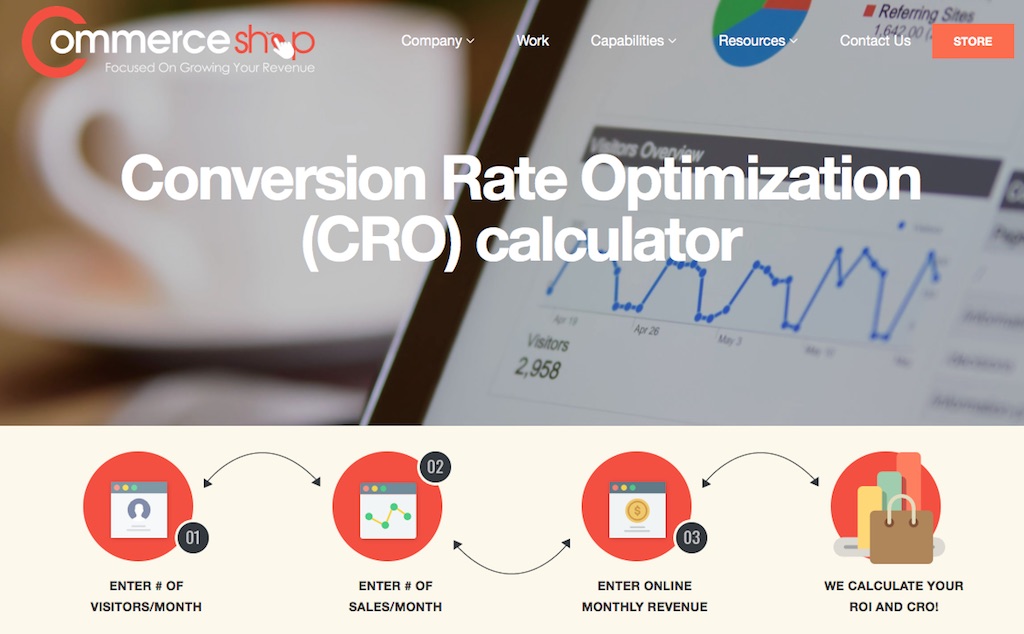
Cost per click (CPC)
What is CPC?
Cost per click refers to the amount you pay to bid on each click on your paid online Ads (e.g., Google Ads).
How do you calculate average CPC?
CPC is calculated by dividing the total cost of your clicks by the total number of clicks
Cart Abandonment rates (CAR)
What is Cart Abandonment Rate?
The rate at which visitors abandon their shopping carts on your site without completing the checkout process.
What is a good Cart Abandonment Rate?
The average cart abandonment rate for eCommerce is between 60% and 80%, with an average of 67.91%.
How do you calculate Cart Abandonment Rate?
You compare the number of abandoned carts to the number of initiated transactions.

A tip to improve your cart abandonment rate is to use an automated marketing platform with a cart abandonment campaign. This way, you can recover some of your lost sales with abandoned cart reminder emails which boast as much as a 29% conversion rate.
Also, using a cutting edge marketing platform, you can set up Automated push notification with cart reminders to help give a gentle nudge to your shoppers that they have left something behind in their carts.
Average Order Value (AOV)
What is Average Order Value?
Average order value, or AOV, is how you track the average dollar amount spent each time a customer purchases from your eCommerce site regardless of device. It’s important to track in order to understand the impact changes in your marketing strategy might have on your sales.
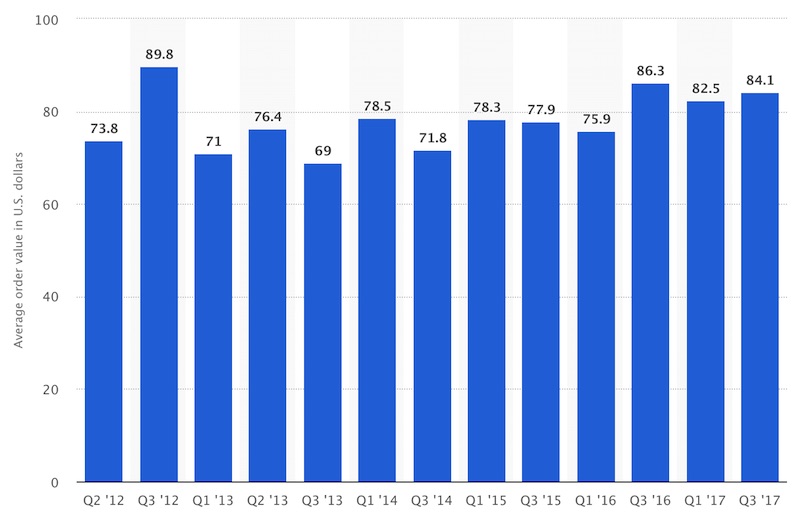
What is a good Average Order Value?
It depends on the industry.
How do you calculate an Average Order Value?</h4>
Divide total revenue by the number of orders.

Tip: A/B Testing can help you increase your AOV because it allows you to quantify impacts of changes you make to your site — both positive and negative.
Other Daily KPIs for marketing & sales
- Site traffic: Used to track the total number of visits to your ecommerce site.
- Bounces: Let’s you understand how many users leave your site after viewing 1 page. The higher the number, the more need to look into why visitors are “bouncing” after landing on your site. Is it your layout? Content? Etc.
- Total sales: Monitoring daily sales profits will help you keep on track to reach your monthly sales goals.
- Unsubscribes: This KPI shows you the total number and the rate of unsubscribers from your email list. Is it high? Low? Is it something you need to investigate?
- Social followers and fans: Use this KPI to figure out loyalty, brand awareness and brand engagement with your followers on Facebook, Instagram, Twitter, Pinterest, etc.
Daily KPIs for customer service
- Total inquiries outstanding: The total number of active issues tells you how many queries are currently in progress.
- Time to respond: This KPI measures how long it takes for your customer support to respond to an issue.
- Average resolution time: This KPI measures the amount of time it takes for a customer support issue to be resolved. The result may reflect any areas you might need to improve on in order to retain happy customers.
- Customer satisfaction (CSAT) score (this can both daily and monthly): The CSAT KPI shows how happy your customers are with their overall shopping experience. It’s usually measured by customers being asked: “How satisfied are you with your experience?”
How can ecommerce success be measured?
There is more to measuring your eCommerce success than revenue. Let’s look at some additional factors that savvy marketers evaluate to make sure that their marketing strategies are succeeding.
- Repeat customers. Customers are coming back to your site for repurchases, this means they are increasing loyalty with your brand.
- Turnover changes to Leftover. Meaning, you not only break even with your monthly business expenses but actually have something (a profit) leftover.
- Growing product assortment. When you are able to increase the different products and services you offer to your customers you are growing your overall business reach.
- Attracting corporate customers. This means more opportunities for bigger sales. Corporations tend to have larger budgets and spend more money per average purchase.
- Increased order value. The more customers spend more they are becoming confident in your brand.
Conclusion: Launch. Measure. Optimize. Repeat.
Remember, measuring everything can lead to paralysis from analysis BUT not measuring anything WILL lead to financial paralysis and…disaster. By identifying which KPIs are vital to the success of your marketing strategies you can create a clear path to grow your business.
Set your business goals and then use our eCommerce KPIs list to inspire you to create your business’ unique eCommerce KPIs dashboard for 2021. Next, go ahead and launch your KPI tracking strategy, measure the results, optimize accordingly and, repeat.

Let’s Help You Scale Up



